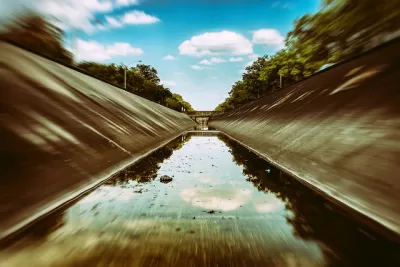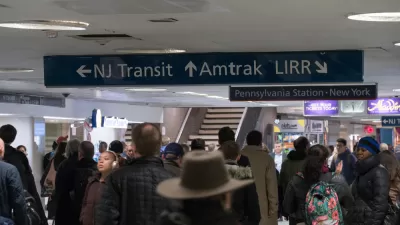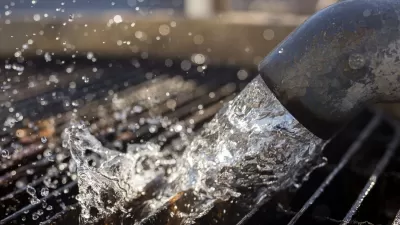The WIFIA federal loans program provides start-up capital to local water infrastructure projects. The program is designed to encourage experimentation and cost-effective construction strategies.

The Trump administration's infrastructure plan remains unclear, especially as press conferences on the subject devolve into controversial (to put it mildly) off-the-cuff remarks on national tragedies. Nevertheless, the Brookings Institution is still looking at how Washington could move forward on infrastructure, and it has identified the EPA's Water Infrastructure Finance and Innovation Act (WIFIA) program as a good bet.
Citing its bipartisan support, Joseph Kane writes, "WIFIA offers greater financial flexibility to a wide variety of utilities, municipalities, and other eligible entities who may lack the capacity to fund water infrastructure upgrades, by helping cover up to 49 percent of project costs and targeting large-scale improvements."
"Unlike federal grants, WIFIA loans depend more on the ability of borrowers to generate revenue, reduce investment risk, and consider other forms of private and nonfederal financing; as a result, it is estimated that the initial federal subsidy can drive more than $2 billion in water loans."
Kane concludes by qualifying all of this. "Time will tell how effective these loans can be in getting projects done nationally, but they mark a step in the right direction at a moment with little to no infrastructure leadership in Washington."
FULL STORY: Despite federal infrastructure cuts, EPA’s WIFIA water loan program holds promise

Alabama: Trump Terminates Settlements for Black Communities Harmed By Raw Sewage
Trump deemed the landmark civil rights agreement “illegal DEI and environmental justice policy.”

Study: Maui’s Plan to Convert Vacation Rentals to Long-Term Housing Could Cause Nearly $1 Billion Economic Loss
The plan would reduce visitor accommodation by 25% resulting in 1,900 jobs lost.

Why Should We Subsidize Public Transportation?
Many public transit agencies face financial stress due to rising costs, declining fare revenue, and declining subsidies. Transit advocates must provide a strong business case for increasing public transit funding.

Paris Bike Boom Leads to Steep Drop in Air Pollution
The French city’s air quality has improved dramatically in the past 20 years, coinciding with a growth in cycling.

Why Housing Costs More to Build in California Than in Texas
Hard costs like labor and materials combined with ‘soft’ costs such as permitting make building in the San Francisco Bay Area almost three times as costly as in Texas cities.

San Diego County Sees a Rise in Urban Coyotes
San Diego County experiences a rise in urban coyotes, as sightings become prevalent throughout its urban neighbourhoods and surrounding areas.
Urban Design for Planners 1: Software Tools
This six-course series explores essential urban design concepts using open source software and equips planners with the tools they need to participate fully in the urban design process.
Planning for Universal Design
Learn the tools for implementing Universal Design in planning regulations.
Smith Gee Studio
Alamo Area Metropolitan Planning Organization
City of Santa Clarita
Institute for Housing and Urban Development Studies (IHS)
City of Grandview
Harvard GSD Executive Education
Toledo-Lucas County Plan Commissions
Salt Lake City
NYU Wagner Graduate School of Public Service





























